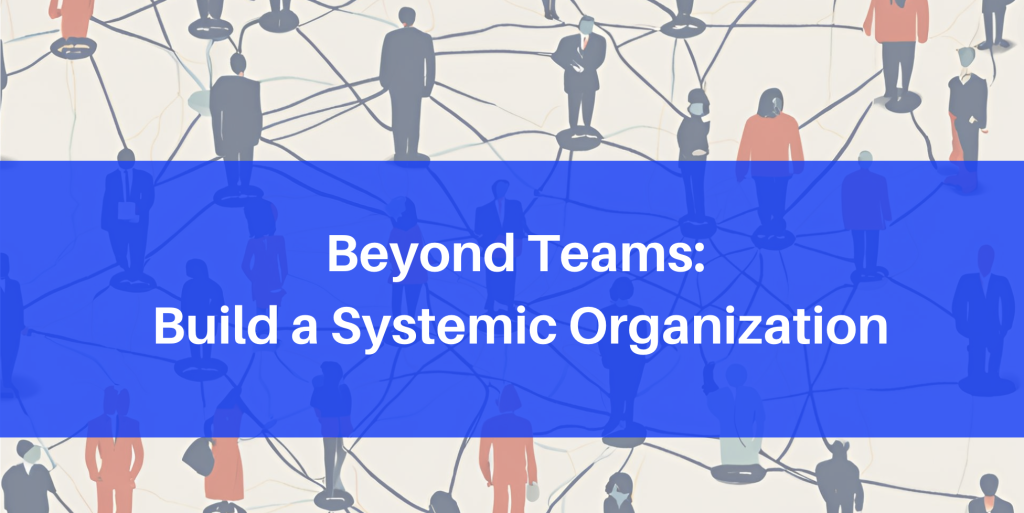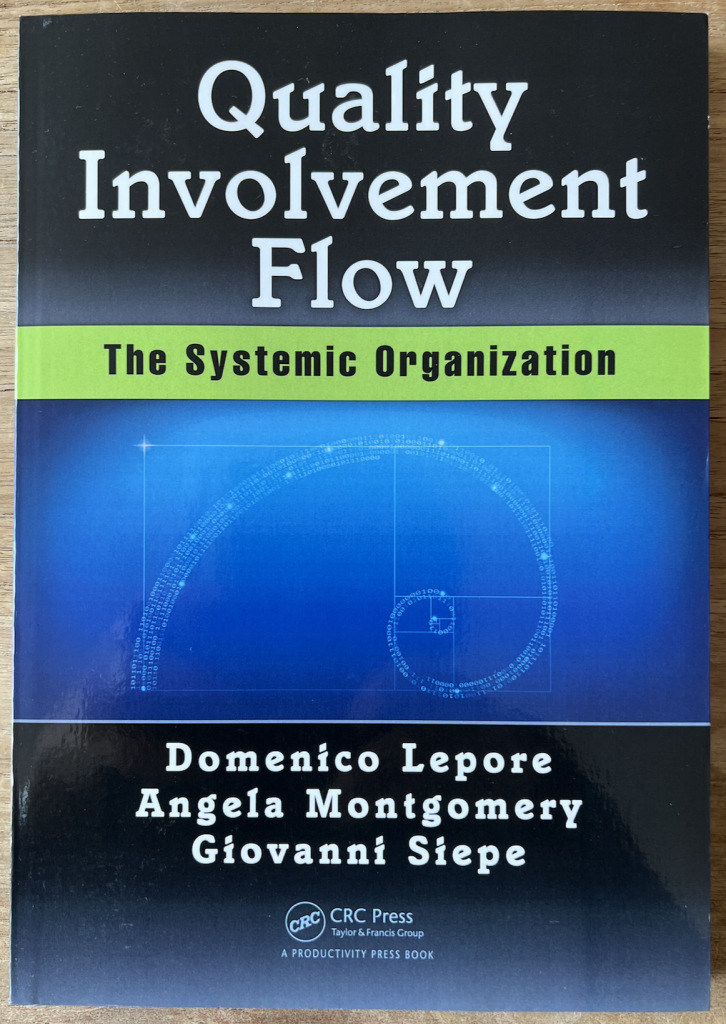
Beyond teams, beyond cross-functional, today’s challenges require nothing less than a Systemic Organization. A Systemic Organization is inherently free of silos. It is built to scale up and handle complexity. But how can you do it, practically?
Since 1996, the Ten Steps of the Decalogue method for systemic management have enabled companies to organize and build themselves as whole, complex systems. Intelligent Management transfers the method so companies can improve Quality, increase the involvement of their people and accelerate the flow of cash generation.
Along the way, as we further developed and refined the method through implementations in many sectors, we have published books to share the knowledge and method. In today’s post, we look at two of those books that cover the fundamentals and all the building blocks that need to be in place to build and operate a company as a systemic organization.
A Systemic Organization: the fundamentals
Our approach stands on the shoulders of two giants of management who thought systemically: Dr. W. Edwards and Dr. Eliyahu Goldratt. The following paragraphs are by our Founder, Dr. Domenico Lepore.
Deming (1900 – 1993) and Dr. Goldratt (1947 – 2011) had similar academic backgrounds but lived in different eras, in different countries, had different faiths, belonged to different communities and had entirely different professional developments as well as personal temperaments. Moreover, their books are written in a profoundly different style and are, frankly, aimed at largely different audiences.
What joins them at the hip is their never shaken trust in the human ability (and desire) to learn and progress. Theirs was a never ending quest for the betterment of the human condition and, especially, the meaningfulness of work-related pursuits.
In the mid-nineties, as in awe as I was of their monumental body of work, something that was enriching my life and informing my professional development, I felt I could add something that could bring these teachings together in a cohesive and comprehensive fashion. As cognizant as I was of the intellectual peril to change even an iota of their superb teachings, I sought the advice of my mentor, Oded Cohen, first and lifetime partner of Dr. Goldratt.
Following 4 years of intense collaborative work and encouraged by Larry Gadd at North River Press, Oded and I released ‘Deming and Goldratt – The Decalogue’ in 1999. After 25 years and several official and unofficial translations, I can happily stand behind every single page of it and claim its validity.
What I am most proud of is that ‘Deming & Goldratt’ has formed the bedrock for some relevant conceptual developments, illustrated in later books, that my team and I developed and tested in numerous in-the-field implementations.
In a world where the complexity of Supply Chains keeps increasing (triggering the fantasies of inflation conscious economists as well as spurring a wealth of useless technology) I could not help feeling some solace in reading what Robert A. Kemp, Ph.D., C.P.M., Professor Emeritus-Management, concluded in his review of the book ‘Deming & Goldratt’ for the National Association of Purchasing Management:
“This is another of those books that belongs in every manager’s briefcase as urgent reading. Similarly, it belongs on the desk of every supply management professional as a “must use” reference to develop organizational control and predictability. It should be part of a trilogy on your desk. You should also have a good book about Dr. Deming and right beside it should be The Goal by Dr. Goldratt. You and your organization will be better for having studied them seriously.”

How to make it happen
In our almost thirty-year quest for more evolved management, Dr. Deming and Dr. Goldratt have been our beacon and constant reference point. They spent their lives in the continuous pursuit of the science and method underpinning such management.
At Intelligent Management, we feel we have inherited that drive and zest for continuous learning. Since 2010, after 15 years of relentless applications and tests, we started our own journey to make the ideas presented in the book ‘Deming and Goldratt – The Decalogue’ come to fruition in full.
The starting question was: What do people in organizations really do? What is the very fabric of their work?
First in ‘Sechel: Logic, Language and Tools to Manage Any Organizational as a Network’ (2011) and later in Springer volume on Complexity in a chapter called ‘Managing Complexity in Organizations Through a Systemic Network of Projects’ (2016) we lay the foundation for a conceptual transition “from Silo to System”. In ‘Quality Involvement Flow: The Systemic Organization’ written by invitation from Michael Sinocchi at CRC Press (Taylor & Francis) we provide a comprehensive lowdown of what is needed to execute that transition.
While intended for practitioners and the general public interested in the themes of organizational development, ‘Quality, Involvement, Flow’ is, at its core, a textbook. It describes at length the “hows and whys” for a systemic organization; it reframes the conversation about the teachings of Dr. Deming and the Theory of Constraints in terms of organizational redesign and pulls no punches in defining a curriculum for a new kind of Business School, one that is cognizant of Complexity and the need for a new covenant with the way we interpret the management of people’s work.
True to our nature and our cultural beliefs, ‘Quality, Involvement, Flow’ strives to highlight the coherence that must exist between undisputed scientific principles and the way they should translate into the design of an organization that sincerely aspires to be labeled as “Systemic”.
‘Quality, Involvement, Flow’ brings to the fore the role that competencies play in the building of a successful organization and aims at being a call to action for any decision maker interested in creating solid foundations for true, long-term success.
(A summary of the main points from ‘Sechel: Logic, Language and Tools to Manage Any Organization as a Network can be found in this post: How to Manage Any Organization as a Network.

To find out more about ten guided steps to a systemic leap ahead for your company, contact Angela Montgomery at intelligentmanagement@sechel.ws
SCHEDULE AN INTRODUCTORY CALL WITH US

Intelligent Management works with decision makers with the authority and responsibility to make meaningful change. We have helped dozens of organizations to adopt a systemic approach to manage complexity and radically improve performance and growth for 25 years through our Decalogue management methodology. The Network of Projects organization design we developed is supported by our Ess3ntial software for multi-project finite scheduling based on the Critical Chain algorithm.
See our latest books: The Human Constraint from Taylor & Francis; From Silos to Networks: A New Kind of Science for Management from Springer; Moving the Chains: An Operational Solution for Embracing Complexity in the Digital Age by our Founder Dr. Domenico Lepore, and ‘Quality, Involvement, Flow: The Systemic Organization’ from CRC Press, New York by Dr. Domenico Lepore, Dr. Angela Montgomery and Dr. Giovanni Siepe.





Leave a Reply